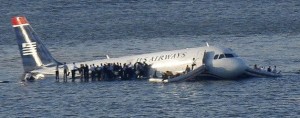In the case of Thursday’s crash of US Airways 1549, geography expedited the speed of response and coverage exponentially. The passengers and crew were not the only fortunate ones after the controlled crash landing in the Hudson River.
It was a big break for the majority of major national media, print and broadcast, with either major bureaus or their headquarters in New York City, as well.
The incredible job done by the pilot to bring down the plane near NYC’s ferry dock made rescue efforts fast and completely successful in saving all aboard. And, thanks to that same proximity, news reporters and crews reached the scene and live pictures were on the air within minutes. Reporters, many of them most likely accompanied by producers, quickly rounded up eyewitnesses, first responders and survivors for interviews.
Things were happening very fast, too, in Tempe, AZ, at US Airways headquarters. President & CEO, Doug Parker and staff were whipping up a statement that he delivered on camera outside airline headquarters not long after the accident.
No one would want to be in Parker’s shoes, to be sure. In a crisis, his job is to present a calm, controlled, reassuring posture and tone, and definitely reflect genuine concern. Yet, his delivery was perfunctory, stiff and lacking emotion. And, at the close of his brief remarks, he read this: “Safety is, has been and forever will be our foremost priority here at US Airways…” Then, he briskly walked away, saying he was on his way to New York. (Click on video below.) Of course safety should be the top priority. But, just saying (or, as in this case, reading) those words with no sense of connection to them makes them hollow and meaningless.
All too often, executives talking to the news media soon after a catastrophic event seem cold and detached. They need to consider that families and friends of victims who might be watching or hearing them need to feel, and believe, that those in charge are compassionate and sincerely share their concerns.
With some thought and consideration, Parker could’ve credited the amazing work of his pilots and flight attendants with the fact that their actions were a demonstration of their training and the airline’s commitment to safety. Putting it that way gives the airline’s commitment context, substance and credibility.
The speed of the media and the instant and lasting impressions that can be left on important audiences make it even more important for executives to be prepared to react quickly and appropriately.




